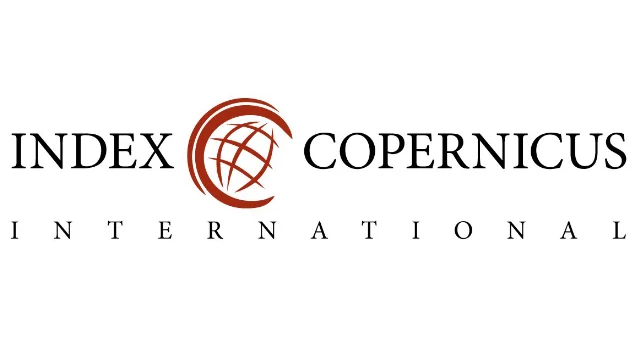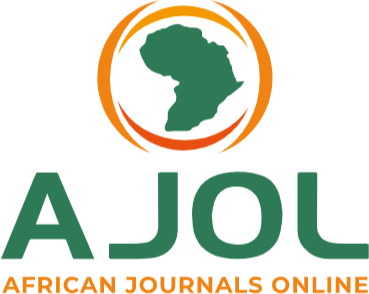Application of Green Computing at Nigerian Tertiary Institutions
Keywords:
Green computing, climatic change, computing devices, Nigerian tertiaryAbstract
Nnaemeka Emeka Ogbene, Hyacinth Chibueze Inyiama, Frank Ekene Ozioko, Nnamdi Johnson Ezeora, Agbo Chibuike George and Asogwa Tochukwu Chijindu
Green computing (also called green technology) is the use of computers and other computing devices/equipment in energy-
efficient and eco-friendly ways to conserve energy and reduce climatic change to its barest minimum. The frequent use of various
computing devices such as desktop computers, mainframe computers, data centres, and other electronic gadgets at tertiary institutions by a very large number of both staff and students result in energy being dissipated at regular intervals which may lead to climatic change and global warming that are hazardous to human health. Warmer temperatures over time
can change weather patterns and disrupt the usual balance of nature thereby posing many health risks to human beings and all other forms of life on earth. In this work, object-oriented analysis and design technology (OOADM) and unified modelling language (UML) tools were employed to develop a template for the application of green computing at Nigerian tertiary institutions. The two UML tools used: use-case and activity diagrams, show the various actors involved in the usage of green computing at tertiary institutions and the sequential steps required by each of the actors in using the green computing in his/her domain, respectively. The template well adopted by all the tertiary institutions and other establishments in Nigeria will help to conserve energy and reduce climatic change drastically, thereby creating a healthy environment.
Downloads
Published
Issue
Section
Similar Articles
- Olawale Babatunde Olatinsu, Segun Opeyemi Olawusi, Mathew Osaretin Ogieva, Electrical Resistivity Characterization of Peat and Clay Profiles at a Suburb of Ota, Southwest Nigeria , Communication In Physical Sciences: Vol. 12 No. 1 (2024): VOLUME 12 ISSUE 1
- Sani Uba, Calvin O. Nwokem, Divine Chinwendu Ikeh, Oluwaseun Simon Adeosun, Abel Kayit, Murtala Mohammed Ruma, Lauretta Ngozi Nwagu, Quality Assessment of Wastewater Released by Funtua Textile Limited, North Western Nigeria , Communication In Physical Sciences: Vol. 8 No. 1 (2022): VOLUME 8 ISSUE 1
- Faith Osaretin Osabuohien, Review of the Environmental Impact of Polymer Degradation , Communication In Physical Sciences: Vol. 2 No. 1 (2017): VOLUME 2 ISSUE 1
- Emeka Chima Ogoko, Aletan, Uduak Irene, Osu Charles Ikenna, Henrietta Ijeoma Kelle, Nnamdi Ibezim Ogoko, Heavy Metal Status and Health Risks Assessment of Some Local Alcoholic and Non-Alcoholic Beverages Consumed in Aba, Nigeria , Communication In Physical Sciences: Vol. 11 No. 4 (2024): VOLUME 11 ISSUE 4
- Abdullahi Lawal, Musa Bello, Ahmed Musa Kona, Quasi-particle band structure and optical properties of Perylene Crystal for Solar Cell Application: A G0W0 Calculations , Communication In Physical Sciences: Vol. 8 No. 2 (2022): VOLUME 8 ISSUE 2
- Nsikak Bassey Essien, Rice Husk as Precursor for Silicon Oxide Nanoparticles: Synthesis and Characterization , Communication In Physical Sciences: Vol. 11 No. 4 (2024): VOLUME 11 ISSUE 4
- Abiodun Rasheed Omokanye, Benefit Onu, A Multi-Source Analysis of Water Supply Challenges in Offa Local Government Area, Kwara State, Nigeria , Communication In Physical Sciences: Vol. 11 No. 2 (2024): VOLUME 11 ISSUE 2
- Assumpta Obianuju Ezugwu, Onyinye Nweke, Stephen Okechukwu Aneke, A survey on Students' Academic Performance in Smart Campuses , Communication In Physical Sciences: Vol. 8 No. 2 (2022): VOLUME 8 ISSUE 2
- Iwuji, Anayo Charles, Okoroafor, Promise Izuchukwu, Owo Awa, Josephine Ezinne, Extended Goal Programming DASH Diet Plan for Stroke Patients , Communication In Physical Sciences: Vol. 11 No. 4 (2024): VOLUME 11 ISSUE 4
- Kantoma, Dogara , Nwokem, Calvin Onyedika, Zakka Israila Yashim, Zaharaddeen Nasiru Garba, Green Synthesis of Silver Nanoparticles(AgNPs) using Calotropis procera Leaves Extract and it Adsorption Properties for the Removal of Cr3+ from Petroleum Waste Water , Communication In Physical Sciences: Vol. 10 No. 3 (2023): VOLUME 10 ISSUE 3 (2023-2024)
You may also start an advanced similarity search for this article.




